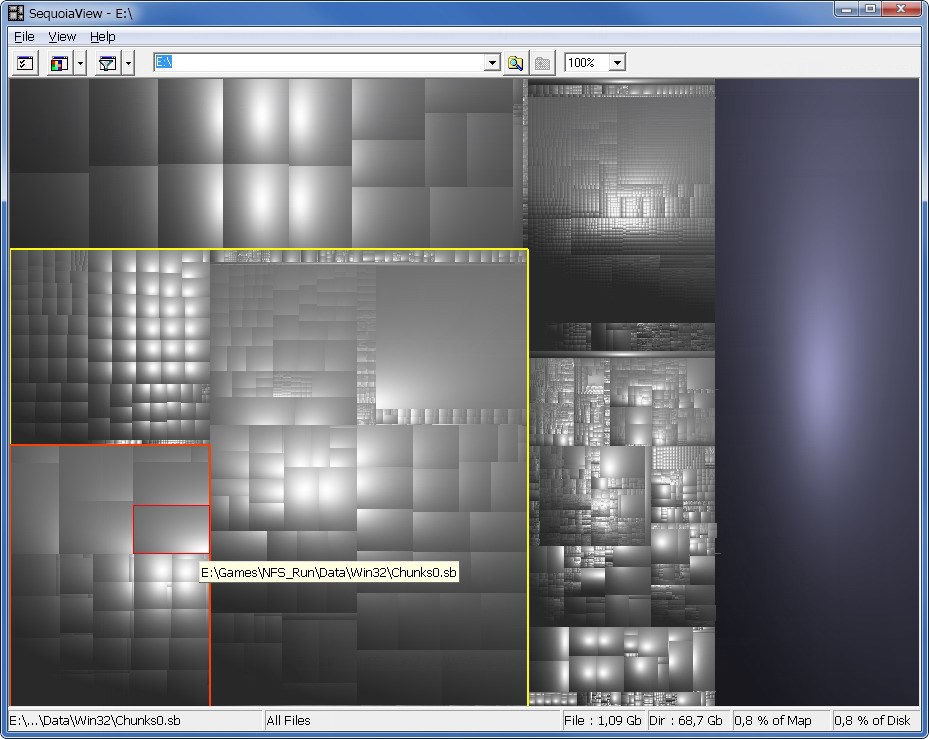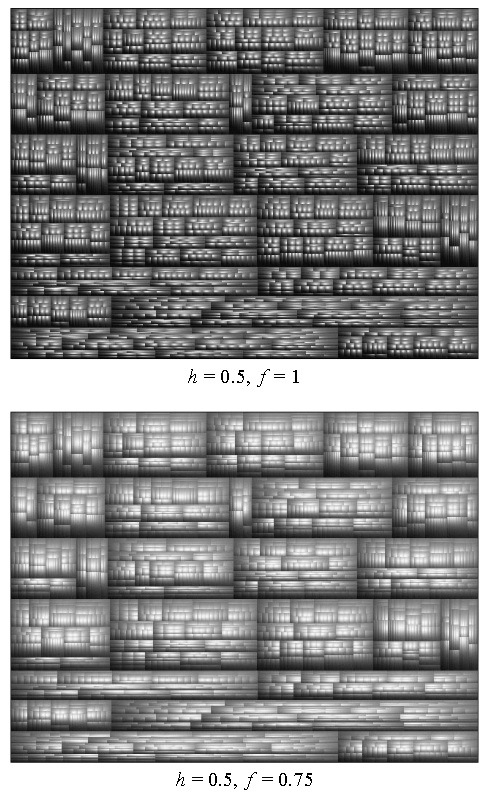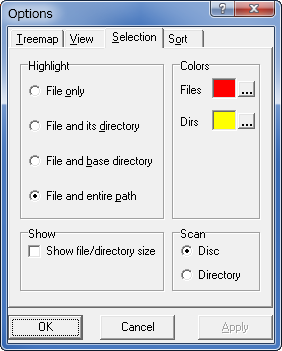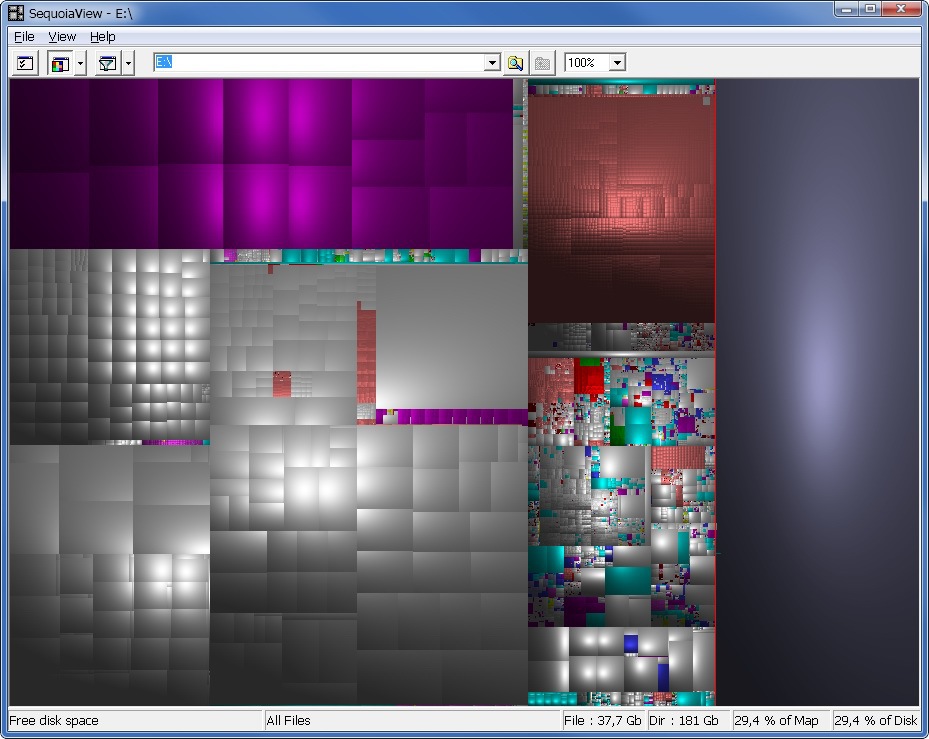What is clogged my hard drive

Today I want to pay tribute to the long-lived program SequoiaView - an application created at the beginning of the 2000s by the Technical University of Eindhoven (Netherlands). The application turned out to be so practical, concise and convenient that for more than 10 years it has been helping out everyone who suddenly runs out of disk space, and now you just need to clear a couple of dozen gigabytes to put in a new game, download a movie or just fill this place in once again with small garbage.
This miniature (1.3 Mb) application has one main function. It draws a cushion treemap of the selected partition on the hard drive. A similar map looks something like this:

What is a tree map?
Tree mapIs a way of representing a hierarchical structure in which the original area is divided into rectangles, the area of which is proportional to the value of some property of this structure (in our example, the volume of the folder in bytes) relative to the value of this property in the entire structure.
Thus, the area of each rectangular section on the tree map is proportional to the volume on the disk of the element (folder or file) corresponding to this section. A map can be constructed by recursively subdividing an arbitrary rectangle according to each level of the hierarchical structure.
For clarity, I’ll give an example of constructing a tree map for some directory tree:
A step-by-step example of constructing a tree map

As you can see from the example, the resulting picture was not the most obvious from the point of view of analysis, it could look better.
Professor of Eindhoven Technical University Jack van Wijk , an expert in the field of data visualization, in 1999 proposed an interesting solution: apply “pseudo-volume” coloring to rectangles, which provides a simple visual perception of the size of areas in a hierarchical tree map, the so-called shading (or tiling). They called this coloring method a “cushion” tree map (cushion treemap). Their work is available for public download.
The accountants decided that the closest person to the method of perceiving the volume is the gradation of shades on the illuminated surface. Thus, the task boils down to constructing a three-dimensional surface that reflects the structure of the tree map. As a solution, they used interval subdivision.
At each hierarchy level, each interval “added” the height of the resulting surface:

The resulting elevation curve (the curve shown in the example in gray) was used to construct the illumination of the entire map in such a way as if the observer was looking at it from above. With this approach, on the one hand, individual segments are clearly separated by shadows, and on the other hand, the general hierarchy of the map is traced and individual levels of the hierarchy can be distinguished. This approach can be generalized to the two-dimensional case. To calculate the degree of illumination added by each level of the hierarchy, the scientist suggested using parabolic curves, choosing the degree of curvature of which you can get both more or less contrasting images:

As practice has shown, this method of visualization is much better than classical (single-color) tree maps, and also better three-dimensional isometric representation.
The described approach was successfully implemented by scientists in the SequioaView program. In addition to the described approach, options were added to it that allow you to control the appearance of the tree map and the selection display:

A convenient option here is to highlight the full path in the tree map to the directory under the mouse pointer (Highlight file and entire path). By default, this mode is not enabled.
On the View tab, you can enable the display of free space at the top level of the map (Show free diskspace on toplevel). By default, it is turned off and the map shows only the space occupied by files.
An interesting feature is the ability to set the color for different file extensions, which allows you to more clearly understand where the photo archive is and where the folders with music are:

Great weekend to everyone! I hope you yourself will experiment with this wonderful program and find something new on your disk ;-) You can write about the most interesting finds in the comments :-)
Only registered users can participate in the survey. Please come in.
Is your hard drive clogged up?
- 39.2% I have a large disk - there is still enough free space 843
- 5.4% I have full free space, but not because the disk is large, but because all the "big" data in the clouds is 116
- 41.5% Yes, the disk is full, you constantly have to look for free space, delete something 892
- 1.9% Does anyone else use desktops at home? Disk? No, I have not heard 41
- 11.8% I use a server / network storage at home, which is full of space 255
